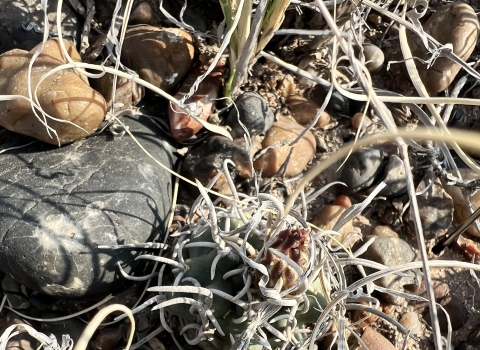DENVER – The U.S. Fish and Wildlife Service (Service) today released the Final Environmental Impact Statement (FEIS) analyzing alternatives for protecting eagles at the Power Company of Wyoming’s (PCW) Chokecherry and Sierra Madre Phase I Wind Energy Project (CCSM). If fully developed, CCSM would be one of the largest land-based wind energy projects in North America, projected to produce enough electricity to power nearly 1million homes.
“This document provides the best roadmap to ensure this and future wind energy projects balance renewable energy goals with the conservation needs of eagles,” said the Service’s Mountain-Prairie Regional Director Noreen Walsh.
Through a permitting system, the Service is able to work collaboratively and proactively with wind companies and other industries to avoid and minimize eagle loss and gather essential information about eagles that will help maximize their conservation across the nation. In return for their conservation efforts, a company may be authorized to “take” “take”
The term “take” means to harass, harm, pursue, hunt, shoot, wound, kill, trap, capture, or collect, or to attempt to engage in any such conduct.
Learn more about “take” (disturb, harm or kill) a limited number of eagles that cannot be avoided.
Before a take permit can be granted, an applicant must submit a plan detailing conservation efforts that will ensure consistency with the goal of stable or increasing eagle populations. The Service is analyzing the impacts of the take permit on the eagle populations through the development of the environmental impact statement.
The CCSM FEIS describes a range of conservation alternatives and accompanying permits for limited eagle take for Phase I of the project: 500-turbines to be built south of Rawlins, Wyo. It assesses the potential impacts of permitting eagle take as well as associated mitigation and conservation opportunities. The Service evaluated four alternatives, including issuing the permit as requested in the application, issuing a permit with different requirements for mitigating impacts to eagles, issuing a permit for the project at a smaller scale, or not issuing the permit.
The preferred alternative in the FEIS is to issue two permits for CCSM. The first, a standard permit, would cover the activities resulting in the unavoidable disturbance of eagles (including nest disturbance) during CCSM Phase I’s construction. The second, a programmatic permit, would cover the take of eagles during the development’s ongoing operation.
Depending on the final turbine design, CCSM's estimated maximum take is one to two bald eagles and 10-14 golden eagles per year. Compensatory mitigation is not required for bald eagles because their abundance can withstand the impacts of the project. However, golden eagle take must be compensated for to ensure the population remains stable. To that end, PCW has committed to retrofitting older power poles currently in use that pose an electrocution hazard to eagles. Permitted take numbers are deliberately conservative, meaning that the conservation measures required of the operator will likely exceed their impact, providing a net benefit to eagles and avoiding PCW from exceeding its authorized take level.
Before issuing an eagle take permit, the Service will need to issue a Record of Decision (ROD) no fewer than 30 days after the FEIS is made public.
The mission of the U.S. Fish and Wildlife Service is working with others to conserve, protect, and enhance fish, wildlife, plants, and their habitats for the continuing benefit of the American people. We are both a leader and trusted partner in fish and wildlife conservation, known for our scientific excellence, stewardship of lands and natural resources, dedicated professionals, and commitment to public service.
For more information on our work and the people who make it happen, connect with our Facebook page at http://www.facebook.com/USFWSMountainPrairie, follow our tweets at http://twitter.com/USFWSMtnPrairie, watch our YouTube Channel at http://www.youtube.com/usfws and download photos from our Flickr page at http://www.flickr.com/photos/usfwsmtnprairie/.



